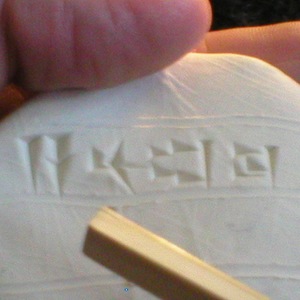Professional jargon gets a bad rap, but it is a useful and indispensable tool: jargon is precise speech that allows experts to speak efficiently with one another. Technical terms have the virtue of being able to mean more narrowly, in fewer words, than does the usual language.
Like any tool, jargon can be misused. Both Ben Goldacre (Bad Science) and Mark Liberman (Language Log) have called attention to a recent study (Weisburg et al, PDF)* showing that bad explanations about human behavior are made more convincing if you sprinkle them with jargon from the field of neuroscience. This can undoubtedly be generalized: bad explanations about anything can seem more convincing, especially to the non-specialist, if served up with a helping of techno-babble.
I want to touch on two categories of misuse: the accidental misuse of jargon in teaching and learning, and the intentional misuse of jargon in pseudo-scholarship. Toward that end, I propose to slightly extend the usual use of a favorite word: phlebotinum.
“Phlebotinum” (sometimes “phlebotnum,” rarely “flebotinum”) was coined by David Greenwalt, screenwriter for Joss Whedon’s Buffy the Vampire Slayer and Angel. It refers to any magical/mystical force or item that exists to further create the show’s narrative world or advance its plot. (Compare to the better-known term, “McGuffin.”) As phlebotinum, an item is intrinsically meaningless: it can be the Orb of Zanzum, the Arm of Ragnok, gamma rays…its significance is purely utilitarian. As that last example shows, real-life things can be used as phlebotinum (here, gamma rays in Spider Man The Hulk) if narratively employed in a fictionalizing way. From a writer’s standpoint, phlebotinum is a placeholder: “Tragically, the heroine allowed the (phlebotinum) to touch the (phlebotinum), allowing the (phlebotinum) to escape (phlebotinum) and wreak havoc on the city.”
As has any teacher, I have seen student work reduce the jargon of my field to meaninglessness. “Form critically, the Deuteronomistic Historian is a source, whereas saga is a narrative where God is ideological.” (Example is made up, thank God, but not by much.) Any student can misunderstand a technical term, but this is different. The student is not so much showing a genuine misunderstanding of the terms, as rather desperately plugging in phlebotinum to “move along the plot” of her doomed explanatory narrative. From a teaching perspective, there is some diagnosis to be done here: has the student simply blown off the material until late in the game? Has she been going outside the course material and cramming with bad explanations from irresponsible sources? Or has she been attending diligently to explanations that are accurate enough but for which she has not adequately been prepared?
Finally, there is the intentionally misleading use of technical terms in pseudo-scholarship, or “woo.” Just as the writer of speculative fiction uses phlebotinum to create her narrative universe or advance her plot, just so does the woo-meister use otherwise-sound technical terms in a fictionalizing way in order to mischaracterize the actual universe or advance her lying narrative depiction of the real world. That is, she seeks to dupe the hearer by employing perfectly good jargon as phlebotinum.
This dimension of phlebotinum—the deceptive use of jargon to advance a fictional narrative explanation of real-life phenomena—goes to the heart of what makes woo, woo. I would propose as a working definition of “Bible woo” the following:
Bible woo: any discourse about the Bible that advances its claims using the appearance and trappings of reasoned argument, while systematically avoiding responsibility to the strictures of reasoned argument.
In a later installment, I will address the objection that any speech about the Bible must be woo: a necessary step, since the term “woo” originates in circles that are traditionally antagonistic to religion in general and therefore to the Bible by association.
* That PDF seems to change locations regularly. If you try the link and it’s broken, notify me in a comment to this post and I’ll track it down again.
